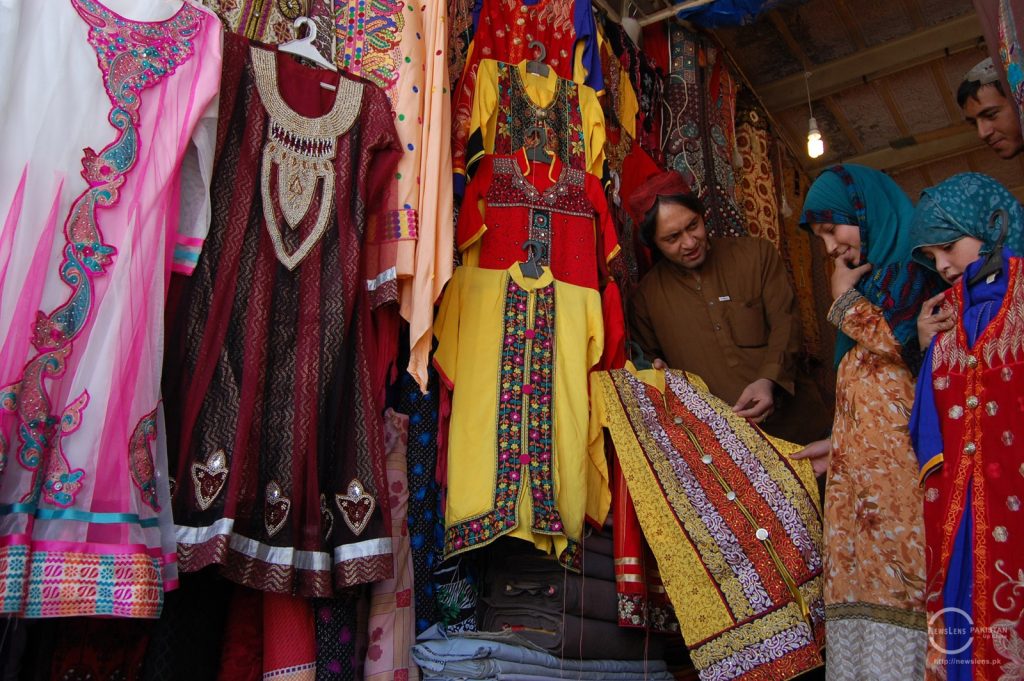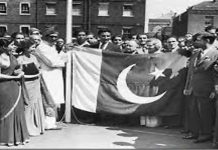
Lahore: Pakistan’s fashion industry is moving on a fast track with designer stores mushrooming all across the country. Wearing a designer outfit makes one feel like one is the cutting edge of fashion. Clothes by designers like Yahsir Waheed, Honey Waqar, HSY, Maheen, Amir Adnan, Sonya Battla, Deepak Perwani, Karma, Noami Ansari, Sara Shahid, Saman Arif (Nayna), Sana Safinas and Zara Shahjahan have become fashion and status symbols. Designer wears have become a craze and their creators are literally worshipped by fashionistas. The trend to follow their designs and creations has given birth to two segments in society — one that buys their originals and second that prefers their replicas.
Pirated outfits or replications are a problem area for these fashion designers. In the pursuit of making fashion affordable, replication or copying has gradually become an industry, providing work opportunities to craftsmen on one the one hand and on the other hand posing a serious challenge to designers who have to put in more effort to innovate new ideas. From cheap knockoffs to accurate reproductions, there is a wide range of pirated designer wear that keeps designers on their toes and make them invest more to create new ideas. The situation is worse as far as lawn prints are concerned, as pirated copies of designer lawns are out in the market within a week of the launch of the originals. In the past, the clothing industry was largely based on a two-season cycle —- summer and winter. As consumers have become more fashion conscious, the clothing industry has responded by adding two more season collections — spring and autumn.
Talking to NewsLens Pakistan, designer Yahsir Waheed says, “One can’t copyright each design because it is a cumbersome and costly procedure. Registration of a design is feasible only when one is selling thousands of prints. For limited collections, the exercise is not worth the hassle. This is a stark reality that there exists buyers of cheap knockoffs and so does their makers. This runs on a demand-supply basis. Though most of copies are poor in quality, some are mimicked quite well. Embroidery work on lawns is mostly replaced with prints and quality of fabric is also compromised unlike the originals. Replica merchants have no cost worries unlike designers who spend so much money on a product from selection of fabric to designing to marketing.
Designer Honey Waqar while taking to NewsLens Pakistan says, “Designers of formal dresses are also a victim of piracy. Their designs are blatantly copied and sold. Copycats are everywhere from small bazaars to markets in posh areas. They just buy an original and get it copied. Interestingly they sell them as copies of known brands. It is next to impossible for designers to put a legal pressure on copycats. Now social websites and internet are flooded with ads of cheap knockoffs and replicas. They get loads of orders and do a thriving business at the cost of designers. This has created a dilemma for brand-conscious people who don’t want to wear an outfit copy of which is out before they have even had time to get it stitched. Piracy of fashion designs is difficult to counter and ultimately does affect the industry. However, the clients who buy replicas are arguably different from those who invest in designer wear. As long as designers are willing to innovate and invest in quality, there is a limit to the damage that piracy can do to the industry.”
Replica merchant in Lahore’s Liberty Market Raja Javed while talking to NewsLens Pakistan says, “He is flooded with customers seeking replicas. He just copies and prepares formal dresses on orders. Everybody does that. Customers come with photographs of designer wears they take on cell phones at exhibitions, designer stores and get them prepared. It depends on customers to choose quality of fabric and design on an outfit. He makes carbon copies of designer wears at relatively low price than the originals. Replicas are within the reach of people who can’t afford the originals. Plus there are a large number of workers and craftsmen directly or indirectly involved in it. They also earn their bread from replications. Same is the case with bridals and formals.”
Talking to NewsLens Pakistan, socialite Fatima Azhar says she has to be brand-conscious, thanks to kitty parties and social circles she moves around. She says she has to wear designer outfits to move around. It is very disheartening when she buys a designer wear at a high price and finds somebody wearing cheap replica of the same outfit. At that moment she feels as if she has been cheated. Deep down she knows all this is superficial but she has no choice but to go with the flow. There has to be some checks on piracy and replications, as it is unfair to those spending so much money on the originals.
Launching a scathing attack on costly designer outfits, housewife Sabina says one has the right to be fashionable. Electronic media has made women more fashion and brand conscious. Now everybody is in a rat race and is forced to compete. Everybody loves to wear brands but economic factors make things otherwise. Replicas or knockoffs are cheaper than the originals so they work wonders for people like hers.
Psychologist Ayesha Aslam says, “Electronic media particularly television plays, morning and cooking shows, fashion channels and advertisements have impacted our lifestyle. Glamour in television plays and advertisements has a major role in changing the mindset of working women and housewives alike. Television viewership is growing with more and more television channels and advertisements are becoming innovative, modern with catchy taglines and more appealing to women. Overall, this has led to a rise in fashion consciousness. Thus women from various income groups are now increasingly inclined to follow ongoing fashion trends and more willing to spend on fashion products according to their respective incomes. Though their budget and taste in fashion may vary, rich and middle classes alike are part of the fashion race. Tracing the factors behind this emerging trend shows the pivotal role played by growth in media and its expanded outreach.”



